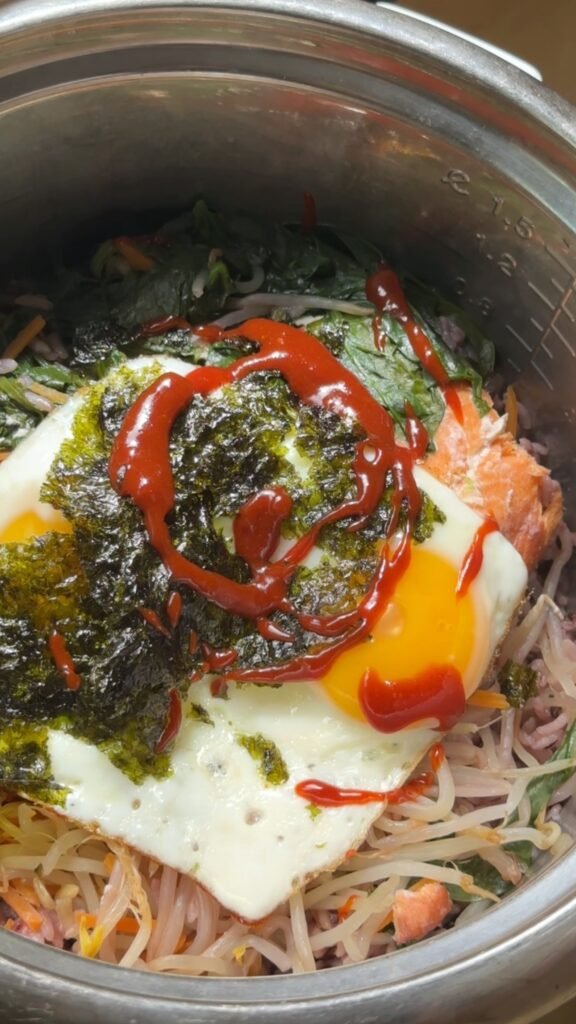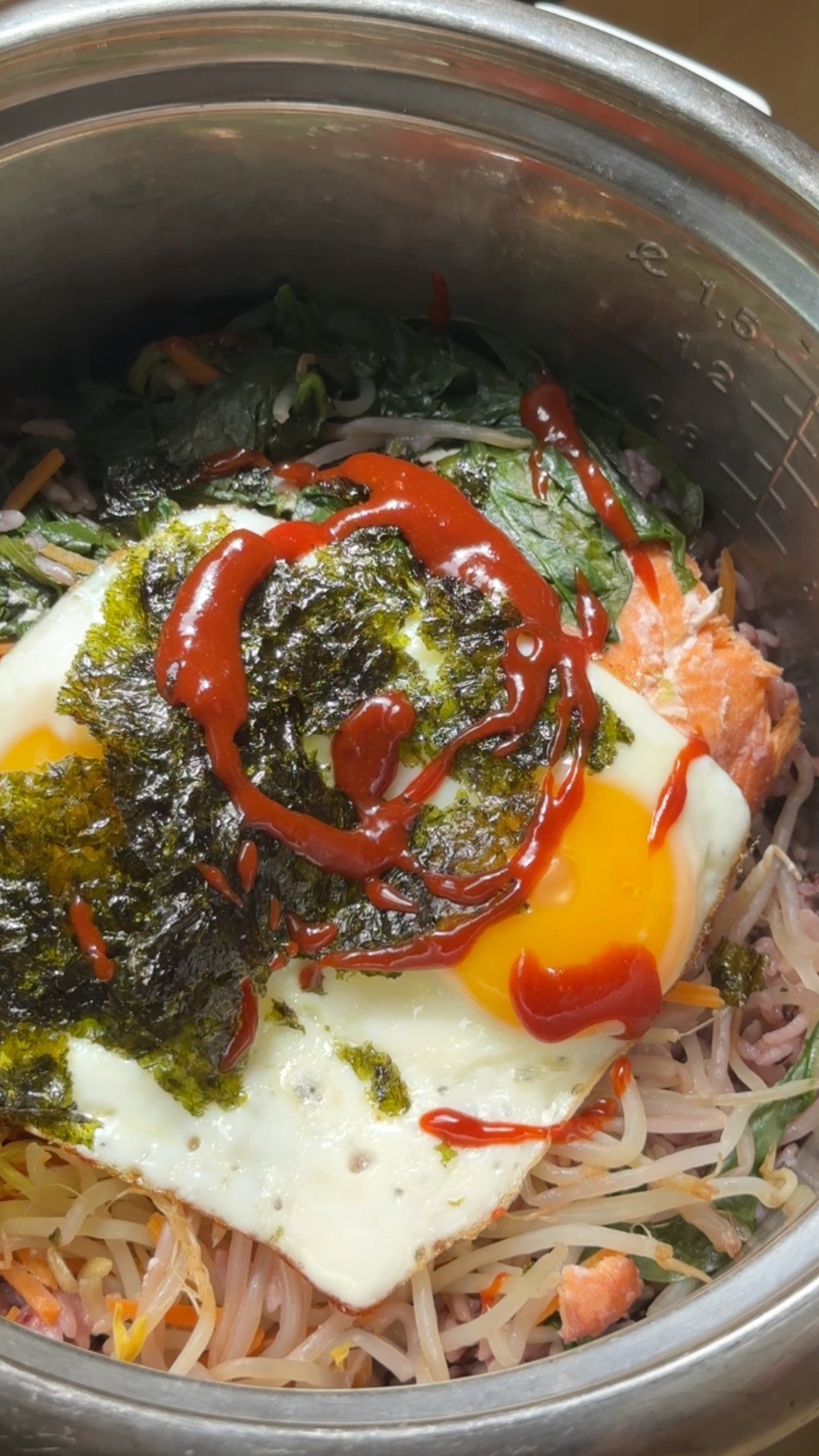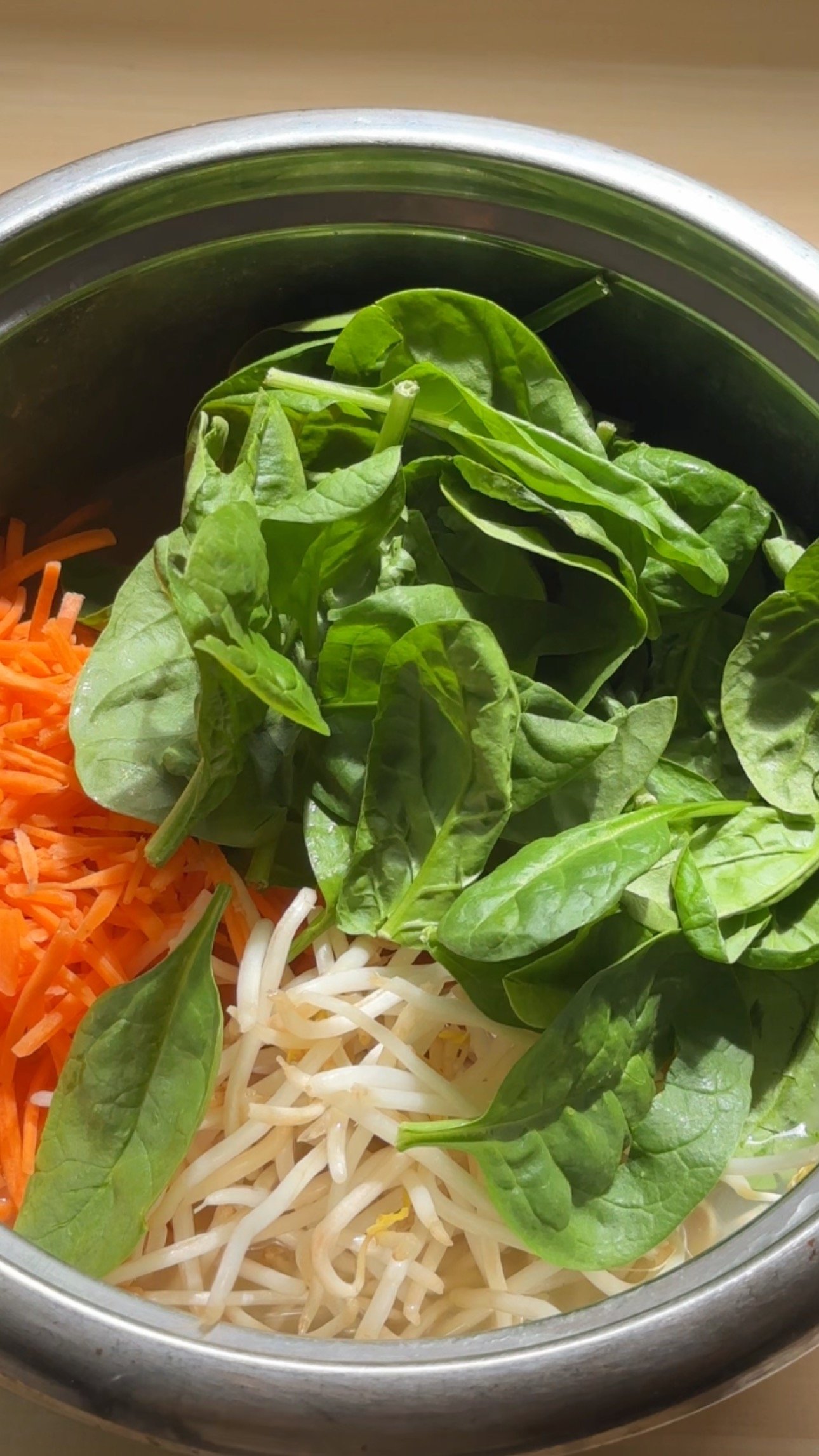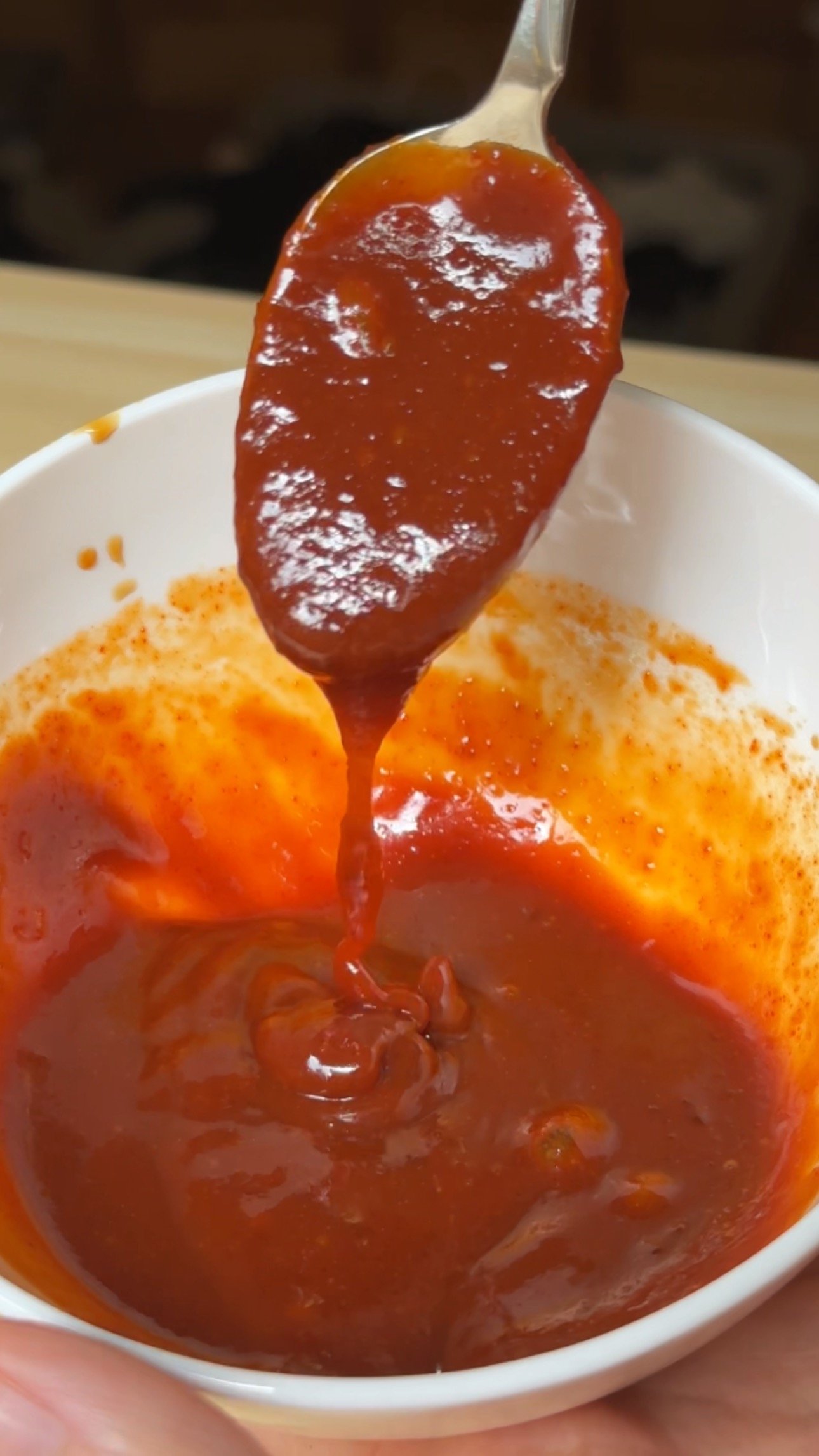This salmon purple rice bibimbap recipe is the ultimate one-pot meal—colorful, hearty, and packed with flavor. Traditionally, bibimbap is a Korean rice dish served with mixed vegetables, a fried egg, and a spicy gochujang sauce. Here, we put a modern twist on the classic by using nutty purple rice and cooking everything together in a rice cooker for a hands-off, stress-free dinner.
The magic begins with the rice cooker. You’ll layer two cups of purple rice on the bottom, place fresh vegetables like bean sprouts, shredded carrot, and spinach on top, then set two salmon fillets over everything. As the rice cooks, the vegetables steam gently and the salmon stays moist and tender. The natural juices from the salmon drip into the rice, adding rich umami flavor without any extra effort.
For even more depth, you can marinate the salmon overnight in sake or white wine. This optional step infuses the fish with a delicate aroma and keeps it juicy. After cooking, simply top each bowl with a crisp fried egg and drizzle with a quick homemade gochujang sauce. This vibrant sauce combines gochujang, sesame oil, soy sauce, honey, and a splash of water for the perfect balance of spicy, savory, and sweet.
This method is foolproof, making it perfect for busy weeknights or meal prep. Plus, it’s easy to scale—just add more salmon and vegetables if you’re feeding a crowd.
Nutrition and Key Ingredients
This dish is as nourishing as it is delicious. Every ingredient contributes to a healthy, high-protein, fiber-rich bowl:
- Purple rice: A blend of white rice and black rice that creates a gorgeous violet hue. Naturally high in antioxidants and fiber, it’s a nutrient-packed alternative to plain white rice.
- Salmon: Rich in protein and omega-3 fatty acids to support heart and brain health.
- Spinach: Loaded with iron, vitamins A and C, and antioxidants.
- Bean sprouts & carrot: Add crunch, fiber, and essential vitamins with very few calories.
- Fried egg: Extra protein and healthy fats for a satisfying, well-balanced meal.
- Homemade gochujang sauce: A clean, flavorful alternative to store-bought sauces with no unnecessary additives.
Together, these ingredients create a meal that’s high in protein, rich in healthy fats, and full of slow-digesting carbs, keeping you full and energized for hours.
Why You Should Make This
If you’re looking for a one-pot, high-protein recipe that feels like a special treat but takes minimal effort, this salmon purple rice bibimbap recipe is it. The rice cooker does all the work, so cleanup is easy, and the results are consistently perfect. Each bite offers a harmony of textures—fluffy rice, tender salmon, crisp vegetables, and a spicy-sweet sauce. Whether you’re cooking for yourself, your family, or a dinner party, this dish delivers big flavor with little fuss.
Easy Rice Cooker Salmon Purple Rice Bibimbap Bowl
This salmon purple rice bibimbap recipe layers salmon, purple rice, fresh vegetables, and a fried egg in a single rice cooker for an easy, one-pot dinner. In Korean, bibimbap literally means “mixed rice,” a dish where warm rice is topped with vegetables, protein, and a flavorful sauce, then stirred together just before eating. A homemade gochujang sauce ties it all together with spicy-sweet flavor.

Ingredients
Instructions
-
Optional: marinate salmon in sake or white wine overnight in the fridge
-
Rinse purple and white rice and add to rice cooker with the appropriate amount of bone broth according to the cooker’s rice line
-
Place salmon fillets, bean sprouts, shredded carrot, and spinach evenly over the rice. Start the rice cooker and cook until the rice is tender and salmon is fully cooked. One standard rice cycle will do the trick!
-
While the rice cooks, fry the eggs and set aside
-
In a small bowl whisk together gochujang, sesame oil, soy sauce, honey, and water until smooth
-
Once the rice cooker finishes, fluff the rice and divide into bowls. Top with gochujang sauce and dried seaweed. Enjoy!
Nutrition Facts
Nutrition Facts
Servings 3
- Amount Per Serving
- Calories 554.29kcal
- % Daily Value *
- Total Fat 14.51g23%
- Saturated Fat 2.57g13%
- Cholesterol 67.61mg23%
- Sodium 525.97mg22%
- Potassium 1081.72mg31%
- Total Carbohydrate 71.77g24%
- Dietary Fiber 5g20%
- Sugars 12.12g
- Protein 31.96g64%
- Vitamin A 9270.18 IU
- Vitamin C 19.76 mg
- Calcium 62.68 mg
- Iron 5.13 mg
- Vitamin E 0.98 mg
- Vitamin K 118 mcg
- Thiamin 0.77 mg
- Riboflavin 0.61 mg
- Niacin 13.7 mg
- Vitamin B6 1.25 mg
- Folate 255.5 mcg
- Vitamin B12 3.66 mcg
- Pantothenic Acid 3.17 mg
- Phosphorus 378.53 mg
- Magnesium 86.81 mg
- Zinc 2.09 mg
- Selenium 54.79 mcg
- Copper 0.59 mg
- Manganese 1.09 mg
* Percent Daily Values are based on a 2,000 calorie diet. Your daily value may be higher or lower depending on your calorie needs.






